Mughal album of portraits, animals and birds. c. 1600-1770
Ink and opaque watercolour on paper. | 32.8 x 22.4 cm (book measurement (inventory)) | RCIN 1005069
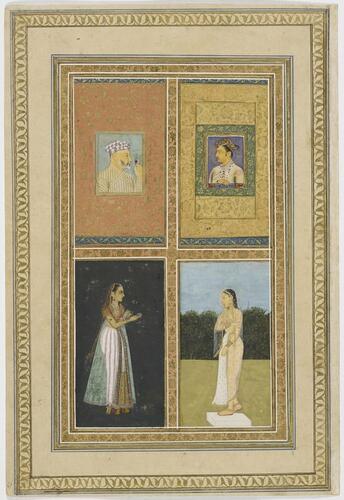
Mughal artist
Master: Mughal album of portraits, animals and birds. Item: Portraits of two Mughal noblemen and two ladies and painting of a falcon c. 1600-1770

Mughal artist
Master: Mughal album of portraits, animals and birds. Item: Paintings of a pair of fighting camels and the siege of a fortress c. 1600-1770

Mughal artist
Master: Mughal album of portraits, animals and birds. Item: Paintings of a pair of fighting camels and the siege of a fortress c. 1600-1770
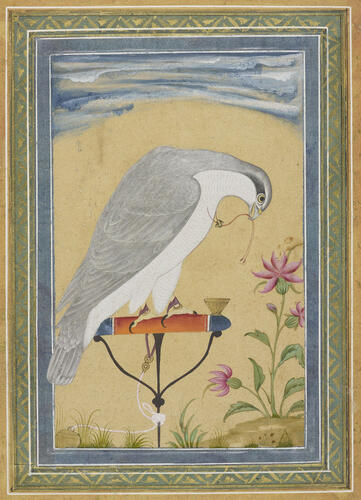
Mughal artist
Master: Mughal album of portraits, animals and birds. Item: Painting of a falcon and portrait of Kam Bakhsh c. 1600-1770
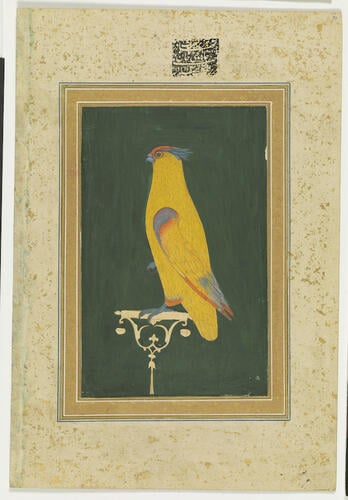
Mughal artist
Master: Mughal album of portraits, animals and birds. Item: Paintings of a lady at her toilette and a parrot c. 1600-1770
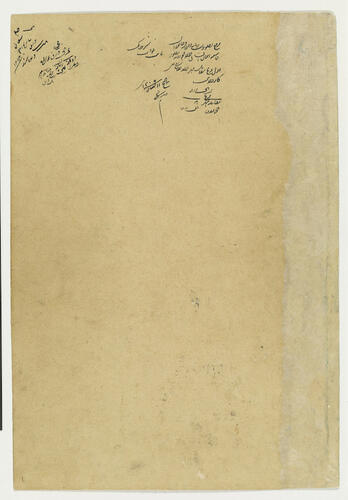
Mughal artist
Master: Mughal album of portraits, animals and birds. Item: Illuminated shamsah c. 1600-1770

Mughal artist
Master: Mughal album of portraits, animals and birds. Item: Painting of a falcon and portrait of Kam Bakhsh c. 1600-1770
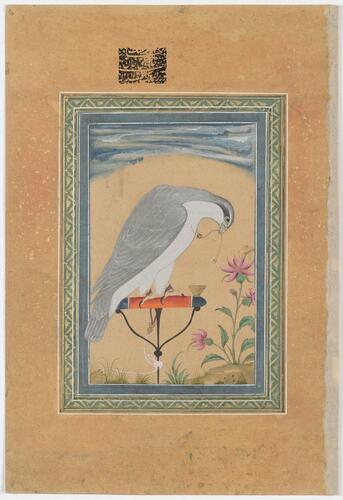
Mughal artist
Master: Mughal album of portraits, animals and birds. Item: Painting of a falcon and portrait of Kam Bakhsh c. 1600-1770
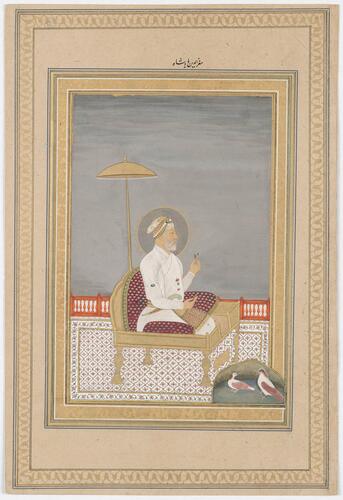
Mughal artist
Master: Mughal album of portraits, animals and birds. Item: Portrait of Emperor Jahandar Shah and painting of an orange minivet c. 1600-1770
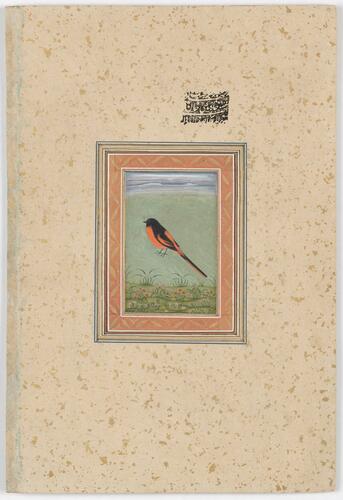
Mughal artist
Master: Mughal album of portraits, animals and birds. Item: Portrait of Emperor Jahandar Shah and painting of an orange minivet c. 1600-1770
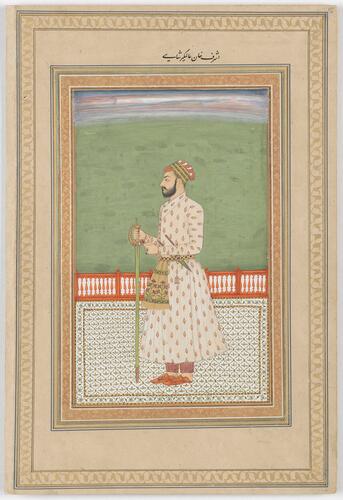
Mughal artist
Master: Mughal album of portraits, animals and birds. Item: Painting of a desert wheatear and portrait of Ashraf Khan c. 1600-1770

Mughal artist
Master: Mughal album of portraits, animals and birds. Item: Painting of a desert wheatear and portrait of Ashraf Khan c. 1600-1770
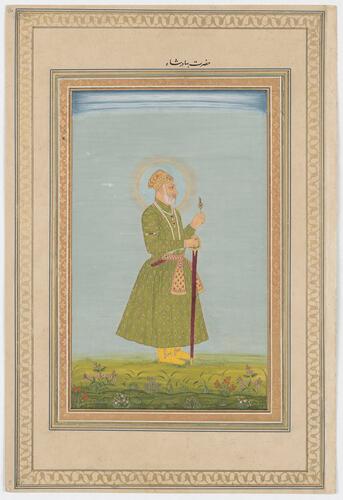
Mughal artist
Master: Mughal album of portraits, animals and birds. Item: Portrait of Bahadur Shah I and painting of an imaginary bird c. 1600-1770
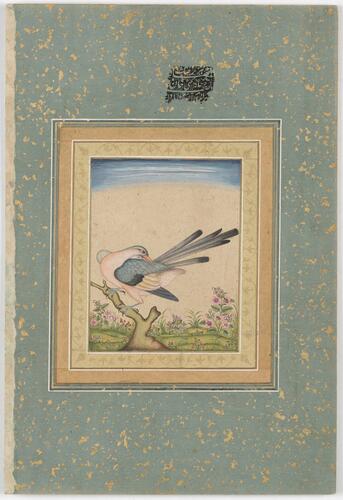
Mughal artist
Master: Mughal album of portraits, animals and birds. Item: Portrait of Bahadur Shah I and painting of an imaginary bird c. 1600-1770
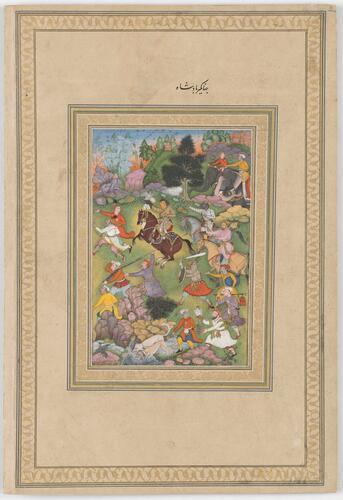
Mughal artist
Master: Mughal album of portraits, animals and birds. Item: Paintings of an imaginary bird and Prince Salim hunting c. 1600-1770

Mughal artist
Master: Mughal album of portraits, animals and birds. Item: Paintings of an imaginary bird and Prince Salim hunting c. 1600-1770

Mughal artist
Master: Mughal album of portraits, animals and birds. Item: Paintings of Bahram Gur and Fitna and a black sheep c. 1600-1770
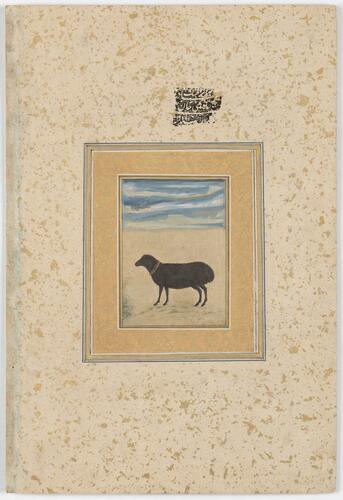
Mughal artist
Master: Mughal album of portraits, animals and birds. Item: Paintings of Bahram Gur and Fitna and a black sheep c. 1600-1770
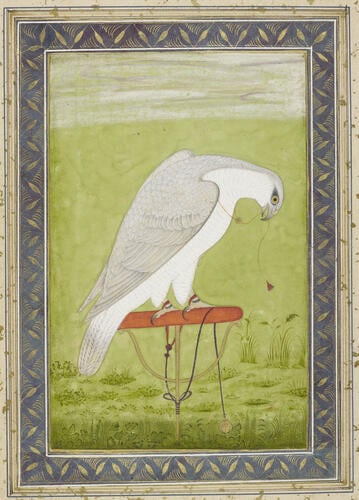
Mughal artist
Master: Mughal album of portraits, animals and birds. Item: Painting of a falcon and portrait of Sulaiman Shukoh c. 1600-1770
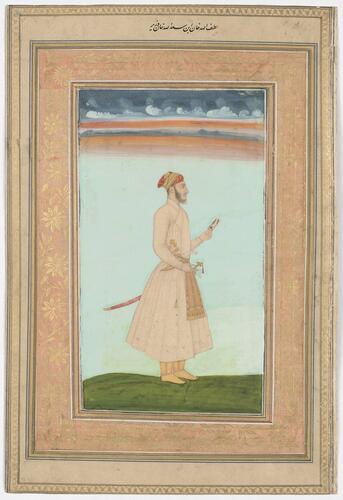
Mughal artist
Master: Mughal album of portraits, animals and birds. Item: Portrait of Lutfullah Khan and painting of a chukar partridge c. 1600-1770




















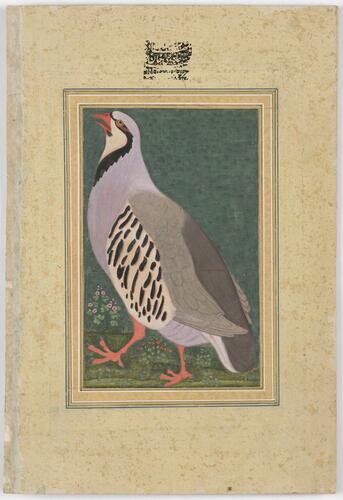
-
An album of 17th and 18th century Mughal paintings bound c.1750-70 in Delhi or Awadh. Each folio is stamped with the seal of Asaf al-Dawlah, Nawab of Awadh dated 1776-7 (see also RCIN 1005038).
The album openings alternate between pairs of facing portraits/genre scenes and pairs of natural history paintings. There is a hierarchy in how the album was arranged starting with emperors and followed by imperial princes, courtiers, holy men, and scenes of women, all interspersed with birds and animals, beginning with imperial falcons. The paintings of birds and animals form a distinct group and are mounted onto coloured borders decorated with gold flecks as opposed to the heavily burnished cream borders with gold painted margins of the other paintings.
In imitation of imperial Mughal manuscripts and albums, the volume opens with two illuminated shamsahs ('sunbursts'), one of which has a painted copy of the genealogical seal of Emperor Jahangir at its centre (see RCINs 1005069.b-c). Following the shamsahs is an illuminated sarlowh (frontispiece) with bust portraits of Emperors Shah-Jahan and Bahadur Shah I (mis-labelled as Shah-Jahan’s son Alamgir) (see RCINs.1005069.c-d) As with the overpainted frontispiece of album RCIN 1005038, it is likely that this was re-purposed from and earlier volume.
The album contains 22 portraits of Mughal princes and nobles, four of which date to the 17th century and are of particularly high quality (see RCINs 1005069.e,f, m and n) while the others are a mix of early 18th century portraits and some copies of earlier works. Six of the paintings are very early 17th century Mughal works, including two depictions of the Madonna, two hunting scenes and two illustrations to poetic texts (see RCINs 1005069.aa, ab, k, l, s, t). A large portion of the album comprises early 18th century generalised depictions of Mughal princesses, often shown visiting Muslim or Hindu holy figures or pursuing leisurely activities on terrace settings. Also included are early 18th century paintings featuring Krishna and the gopis, likely illustrations of a specific text (see RCINs 1005069.au, av, az).
The majority of the paintings are numbered, though now out of sequence (8-12; 14-17; 20; 22-28; 30; 35-39; 42-52; 54-59; 61-65; 70), which suggests that they were once part of a larger group before being re-assembled in their present format.
The bird and animal paintings of this album are an assortment of 17th and 18th century works, including some by Deccani artists. The sixty or so paintings depict a variety of indigenous species, some of which may be earliest pictorial records of them to survive and demonstrate a little-explored continuity between Mughal and Company period paintings. In most cases, impressions of ground and sky have been added at the top and bottom, as in album RCIN 1005038, in order to give greater uniformity to the painting.
The lacquered bindings are 18th century and painted with flowers outlined in gold against a green background with central medallions and outer borders.
The seal of Asaf al-Dawlah dated 1190AH (1776-7) appears on one side of every folio. Other seals and inspection notes date to 1791 and 1800. The volume is thought to have been presented to George IV with RCIN 1005038 in the early 19th century.
For all 60 individual folios see RCINs 1005069.b - 1005038.bk.Provenance
Thought to have been presented to George III or George IV after 1810.
-
-
Medium and techniques
Ink and opaque watercolour on paper.
Measurements
32.8 x 22.4 cm (book measurement (inventory))
Category







